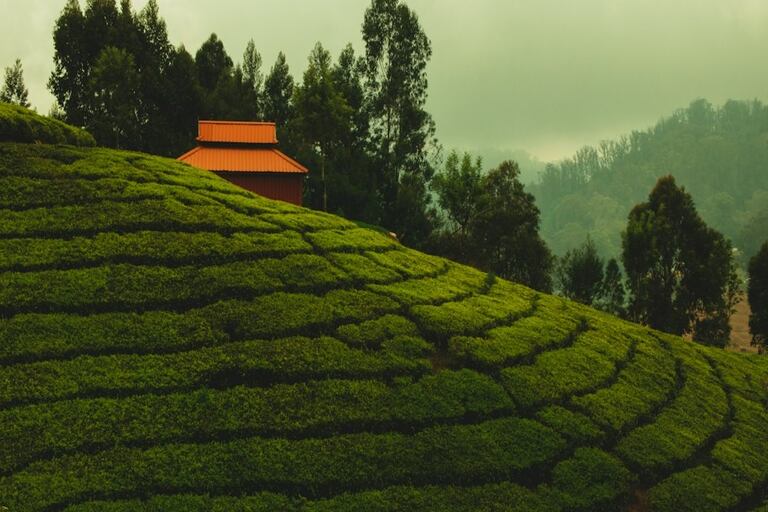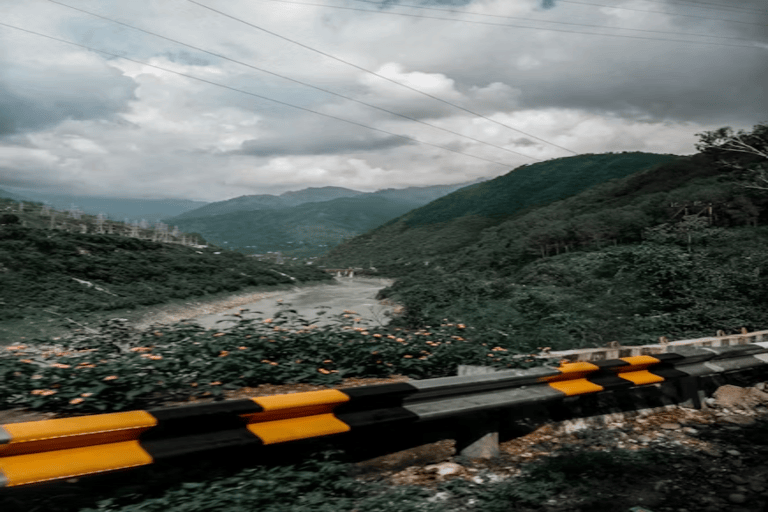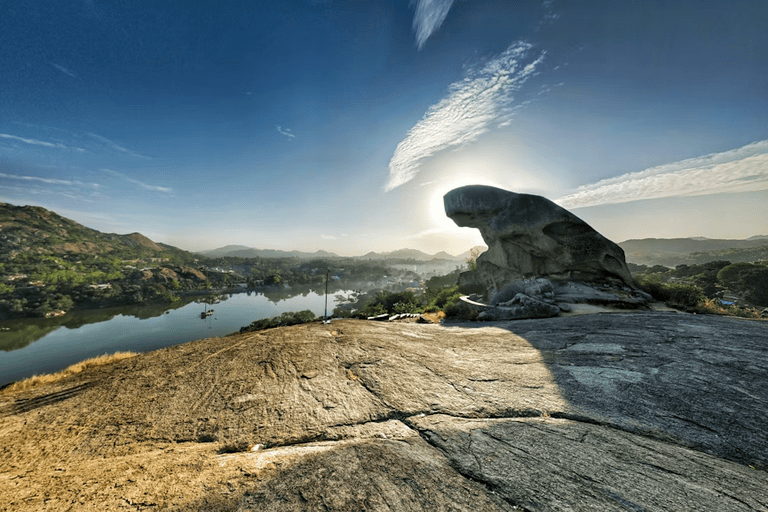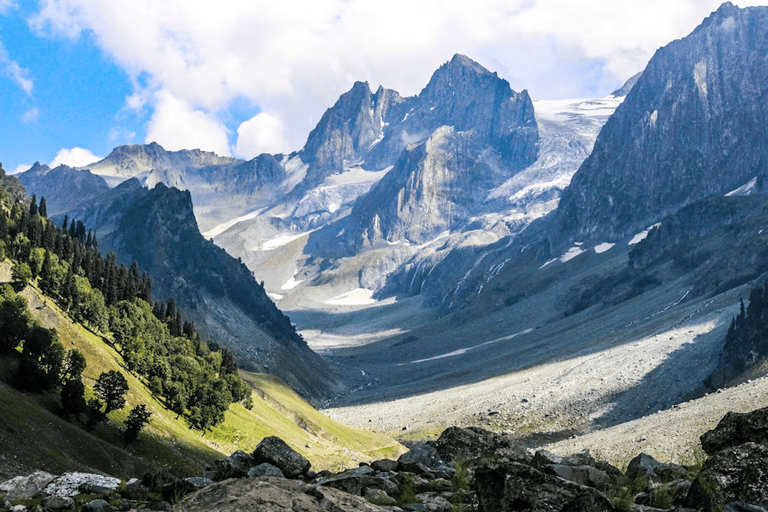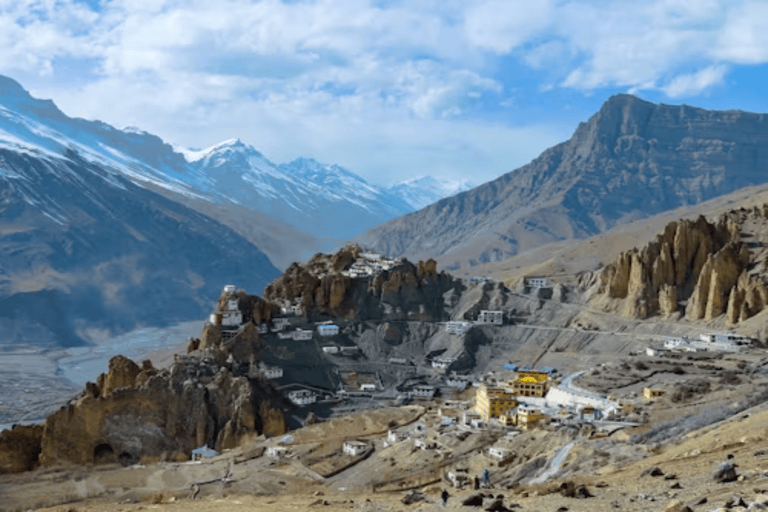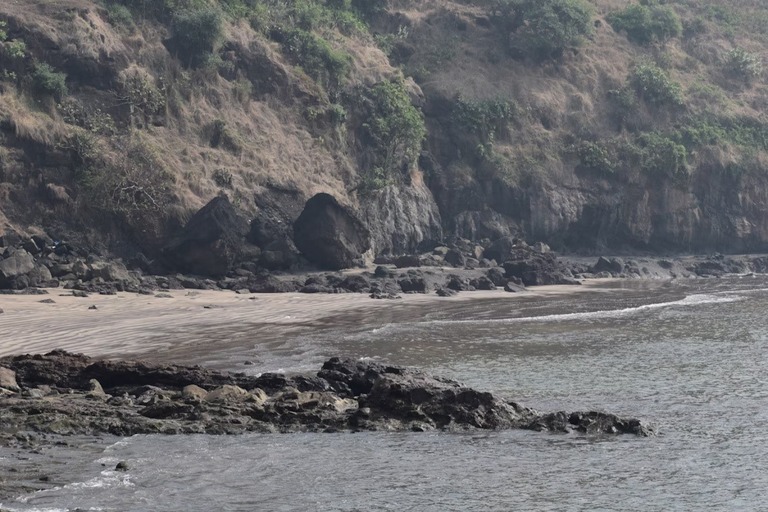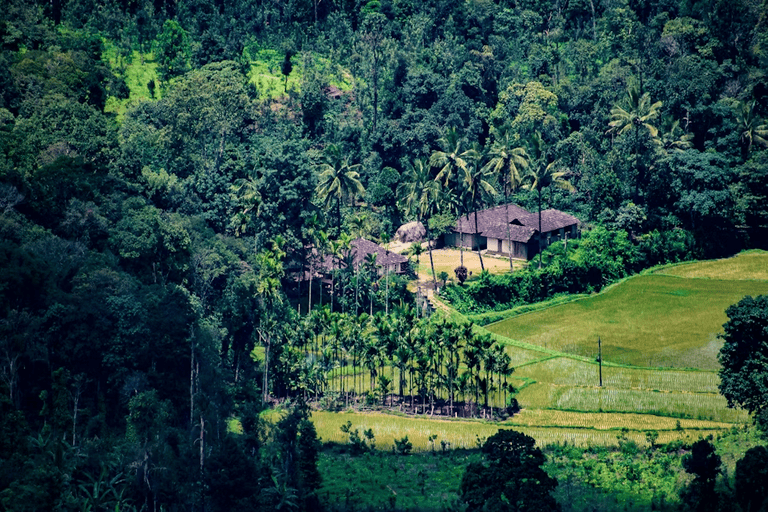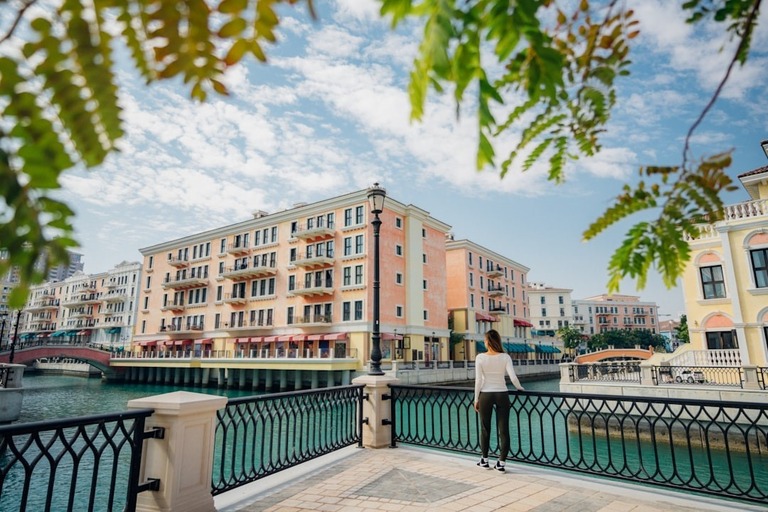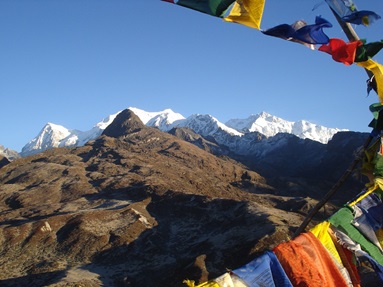
Sikkim’s Spiritual Splendour: Embarking on a Journey of Buddhist Discovery in Gangtok
Table of contents
Nestled amid the Himalayas, Gangtok stands as a tranquil haven for travelers seeking spiritual solace and natural beauty. With its serene monasteries, breathtaking viewpoints, and rich cultural heritage, Gangtok offers a unique blend of experiences that captivate the senses and nourish the soul. From the ancient Enchey Monastery perched on a hilltop to the majestic Rumtek Monastery adorned with intricate art, every corner of Gangtok exudes an aura of peace and tranquility.
So, whether you’re seeking enlightenment through meditation or simply wish to immerse yourself in the stunning vistas of the land, Gangtok promises a journey of discovery and rejuvenation like no other.
Why Embark On A Journey of Buddhist Discovery In Gangtok
Embarking on a journey of Buddhist discovery in Gangtok offers you an opportunity to delve into the depths of spirituality amidst the serene beauty of the Himalayas. Gangtok’s tranquil monasteries, steeped in centuries of tradition, serve as sanctuaries for seekers of inner peace and enlightenment. Here, amidst the melodious chants of monks and the fragrant aroma of juniper incense, you can immerse yourself in the teachings of the Buddha and experience a sense of connection to the universe. Whether through meditation sessions, prayer flag ceremonies, or encounters with revered monks, a journey of Buddhist discovery in Gangtok promises to be a transformative experience, leaving a lasting impression on the mind, body, and spirit.
Best Time For A Trip To A Gangtok Monastery
The best time to visit Gangtok is during the months from March to May and October to December respectively. During these periods, Gangtok experiences pleasant weather with clear skies, making it ideal for sightseeing and outdoor activities. It’s advisable to avoid the monsoon season from June to August due to heavy rainfall, which may lead to landslides and road closures, hindering travel plans. Similarly, winter months from December to February can be chilly, although it’s an excellent time to witness snowfall and enjoy winter sports activities. So, if you’re planning a trip to a monastery in Sikkim, keep in mind the aforementioned months for the best experience.
How To Reach Gangtok
Planning a Sikkim Buddhist Monastery trip? Here are the different ways to reach Gangtok. Choose the best convenient option and make sure to plan your trip well in advance.
By Air
The nearest airport to Gangtok is Bagdogra Airport in West Bengal, located approximately 124 kilometers away. The airport is well-connected to all major cities like Bengaluru, Mumbai, Kolkata, Chennai, Guwahati and New Delhi. From the airport, you can hire a taxi or take a shared cab to Gangtok, which takes around 4 to 5 hours depending on traffic and road conditions.
By Train
The closest major railway station to Gangtok is New Jalpaiguri Junction(NJP), also located in West Bengal, about 120 kilometres away. From NJP, you can take a taxi or bus to Gangtok, which takes around 4 to 5 hours.
By Road
Gangtok is well-connected by road to major cities in the region, including Siliguri and Darjeeling. You can either hire a private taxi or take a shared jeep from these cities to reach Gangtok. The journey offers breathtaking views of the Himalayas and lush valleys, making it a memorable experience in itself.
Exploring Gangtok’s Buddhist Treasures
Gangtok boasts a plethora of monasteries, each offering a unique blend of spirituality, history, and architectural marvels. Here is a list of the best monasteries to explore in Gangtok:
1. Rumtek Monastery
Rumtek Monastery, the largest monastery in Sikkim, is a must-visit on your trip to Gangtok monasteries. Nestled in the hills near Gangtok, it’s a beautiful symbol of Tibetan Buddhism’s rich history. Known as the “Dharma Chakra Centre,” it’s a special place for Buddhists and visitors alike. The monastery’s stunning architecture, with its golden spires and colourful decorations, is truly breathtaking. Inside, you’ll find ancient books, thangka paintings, and other precious items that tell the story of Buddhism. You can join monks in their prayers, take part in meditation sessions, and feel a sense of peace and tranquillity. Rumtek stands as an important spiritual centre and a visit here is a journey to find inner peace and understanding.
Timings: 6:00 am – 6:00 pm
Entry Fee: INR 10
2. Enchey Monastery
Enchey Monastery is another best monastery in Gangtok that attracts huge crowds. Situated atop a hill, this monastery holds a special place in the hearts of locals and visitors alike. Its serene setting amidst lush forests makes it a peaceful retreat from the bustling city below. Dating back to the 19th century, this monastery is dedicated to Guru Padmasambhava, the patron saint of Sikkim. Its architecture, adorned with colourful prayer flags and intricate carvings, reflects traditional Tibetan influences. Inside, you can explore the prayer halls, adorned with ancient scriptures and sacred relics, and witness monks engaged in daily rituals and prayers. The monastery’s tranquil courtyard offers a serene space for meditation and reflection, while the panoramic views of Gangtok city below add to its charm.
Timings: 9:00 am – 5:00 pm
Entry Fee: No entry fee
3. Ranka Monastery
Ranka Monastery, also known as Lingdum Monastery, is a hidden gem situated approximately 20 kilometres from Gangtok. Despite its relative newness, it stands as a significant landmark in East Sikkim, boasting expansive grounds and breathtaking views. The monastery, following the Zurmang Kagyud lineage of Buddhism, has attracted attention from filmmakers for its picturesque setting and serene ambience. Surrounded by forested mountains, the monastery’s tranquil atmosphere offers visitors a chance to connect with spirituality amidst nature’s beauty. Within the monastery, you can observe young lamas studying in classrooms and also interact with monks adorned in vibrant robes. Additionally, the nearby Banjhakri Falls provides an opportunity for adventure enthusiasts to partake in activities like paragliding. Whether seeking spiritual solace or admiring the scenic vistas, Ranka Monastery offers a memorable experience filled with tranquillity and cultural richness.
Timings: 6:00 am – 6:00 pm
Entry Fee: No entry fee
4. Dubdi Monastery
Also known as the Yuksom Monastery, the Dubdi Monastery is a revered Buddhist sanctuary belonging to the Nyingma sect of Tibetan Buddhism. Situated in the picturesque Yuksom Valley within the Geyzing subdivision of West Sikkim, it holds the distinction of being one of the oldest monastic establishments in the region, founded in the year 1701. Perched serenely atop a hill, it stands as a testament to centuries of spiritual devotion and cultural heritage. The Dubdi Monastery, often referred to as the “Hermit’s Cell,” is nestled approximately an hour’s walk from Yuksom, offering pilgrims and visitors a peaceful retreat amidst the tranquil beauty of the Himalayan landscape.
Timings: 7:00 am – 4:00 pm
Entry Fee: No entry fee
5. Phodong Monastery
Phodong Monastery is among Sikkim’s six key Buddhist sites, cherished by pilgrims and tourists alike. Its stunning architecture, adorned with vibrant colours and intricate paintings, makes it one of India’s most picturesque monasteries. Perched at an altitude of 4500 meters, it offers sweeping views of lush hills and tranquil valleys. Founded in 1740 AD by Sikkim’s fourth king, Gyurmed Namgyal, it belongs to the Karma Kagyu sect. Despite being rebuilt after an earthquake in 1977, the monastery maintains its original serenity and charm, attracting visitors seeking solace amidst its peaceful ambiance. The monastery houses around 260 resident monks and stands as a symbol of spirituality and cultural heritage.
Timings: 8:00 am – 5:00 pm
Entry Fee: No entry fee
6. Dodrupchen Monastery
Nestled amidst the pristine landscapes of Sikkim, Dodrupchen Monastery stands as a revered sanctuary of Tibetan Buddhism. Situated in the enchanting town of Gangtok, it holds a significant place among the region’s spiritual sites. Founded by Dodrupchen Rinpoche, a prominent Buddhist master, the monastery exudes an aura of tranquillity and devotion. Its architectural grandeur, adorned with vibrant colours and intricate designs, captivates visitors from near and far. Dodrupchen Monastery serves as a hub for Buddhist practitioners, offering teachings, meditation sessions, and spiritual retreats. With its serene ambience and breathtaking views of the surrounding mountains, it provides a perfect setting for meditation and reflection. Pilgrims and tourists alike flock to this sacred site to experience its profound spiritual energy and immerse themselves in the teachings of Tibetan Buddhism. It’s a must-visit on your Sikkim tour package.
Timings: 9:00 am – 5:00 pm
Entry Fee: No entry fee
7. Tsuk La Khang Monastery
Situated within the Tsuklakhang Royal Palace complex, Tsuk La Khang Monastery stands as a testament to Sikkim’s rich cultural heritage. Constructed in 1898 AD during the reign of Thutob Namgyal, the 9th King of Sikkim, it serves as the principal place of worship for the local Buddhist community. This exquisite two-story edifice boasts mural-adorned interiors and houses a vast collection of scriptures, alongside altars and deities and images of Lord Buddha. Once a venue for royal ceremonies, including marriages and coronations, the monastery is adorned with wooden sculptures depicting Snow Lion heads at each corner. Inside, you are greeted by intricately decorated walls featuring murals and altars. Throughout the year, the monastery hosts festivals such as Phang Lhabsol and Losoong, featuring the renowned Chaam mask dance performed by resident monks. During Losar, the monastery opens its doors to tourists, offering a glimpse into its spiritual ambience amidst the breathtaking natural beauty of Gangtok. If you’re looking to visit the best monastery in Gangtok, then Tsuk La Khang Monastery is the perfect choice.
Timings: 7:00 am – 5:00 pm
Entry Fee: No entry fee
Other Places To Visit In Gangtok
Once you’ve explored the beautiful monasteries and have time to visit some other popular attractions, then here is a list of the top places to visit in Gangtok:
- Tsomgo Lake: Located about 38 kilometres from Gangtok, Tsomgo Lake is a stunning glacial lake nestled at an altitude of 3,753 meters. Surrounded by snow-capped mountains and pristine natural beauty, it’s a popular destination for nature lovers and photography enthusiasts.
- Nathu La Pass: Situated at an altitude of 4,310 meters, Nathu La Pass is a historic mountain pass that connects India with Tibet. Here, you can enjoy breathtaking views of the Himalayas. It’s a must-visit attraction when in Gangtok.
- Namgyal Institute of Tibetology: Founded in 1958, this institute is dedicated to the study and research of Tibetan language, culture, and Buddhism. It houses a vast collection of artefacts, manuscripts, and thangka paintings, making it a fascinating cultural hub.
- Ganesh Tok and Hanuman Tok: These two hilltop temples offer panoramic views of Gangtok and the surrounding mountains. Visitors can pay homage to Lord Ganesh and Lord Hanuman while enjoying the serene ambience and stunning vistas. The Himalayan Zoological Park located close to Ganesh Tok is a must-visit for kids and animal lovers.
Things To Keep In Mind When Visiting Gangtok
When visiting Gangtok, keeping a few key points in mind can enhance your experience and ensure a smooth and enjoyable trip:
- Weather: Gangtok’s weather can be unpredictable, so it’s advisable to pack accordingly. Layered clothing, including warm jackets and waterproof gear, is essential, especially if you plan to explore outdoor attractions.
- Permits: Certain areas in and around Gangtok, such as Tsomgo Lake and Nathu La Pass, require permits for entry. Make sure to obtain the necessary permits in advance to avoid any inconvenience during your visit.
- Altitude: Gangtok is situated at a high altitude, so travellers should take precautions to prevent altitude sickness. Stay hydrated, avoid strenuous activities upon arrival, and acclimatise gradually to the altitude.
- Local Customs: Respect local customs and traditions, especially when visiting monasteries and other religious sites. Dress modestly, remove your shoes before entering sacred spaces, and refrain from taking photographs unless permitted.
As you plan your unforgettable journey to explore the enchanting wonders of Gangtok, let Thomas Cook be your trusted travel companion. With our expertise and personalized services, we’ll ensure your trip is seamless and memorable. Whether you’re seeking adventure in the Himalayas, cultural immersion in Sikkim’s vibrant cities, or simply a tranquil retreat amidst nature’s splendor, we have the perfect Sikkim tour packages for you. Contact us today to book your dream getaway and embark on an unforgettable adventure with us. Your journey to Gangtok awaits!
Table of contents
Trending blogs for you
Recommended Articles for you
15+ Places to Visit in Ooty – The Queen Of Hill Stations
Reading Time: 9 minutes 0 0 How does this sound to you: bright green soothing slopes, mystical pathways, and clouds that kiss your hair? Ooty is replete with such immense beauty and has enough activities and elements to keep every traveler happy and satisfied.One […]
PAR: Hong Kong Visa Myths Busted
Reading Time: 6 minutes 0 0 Hong Kong, the Special Administrative Region of the People’s Republic of China (PRC), is increasingly becoming one of the most sought-after international holiday destinations for Indian tourists. This has something to do with its vibrant culture, iconic skyline, […]
Choosing the Best Forex Card for Your Travel Needs
Reading Time: 9 minutes 0 0 Travelling abroad can be an exciting adventure, but managing your finances while on a trip can sometimes be challenging. When visiting different countries, paying in local currency is essential to avoid the pitfalls of unfavourable exchange rates and […]
Top Zero Markup Credit Cards for Forex Transactions in India in 2025
Reading Time: 9 minutes 0 0 Traveling internationally often comes with various expenses, and one of the most significant is currency conversion. Traditional methods, such as exchanging cash or using credit/debit cards, usually involve hidden charges, hefty conversion fees, and unfavourable exchange rates. Enter […]
Why You Should Consider Trading Forex: 12 Key Insights
Reading Time: 5 minutes 0 0 Foreign exchange trading, commonly known as forex trading, has grown to become one of the most popular forms of trading worldwide. With a daily trading volume exceeding $7 trillion, it represents the largest and most liquid financial market. […]
Key Differences Between Regular Bank Accounts and Overseas Bank Accounts
Reading Time: 5 minutes 0 0 In a globalized world where people frequently travel, migrate, or conduct business across borders, understanding the distinction between regular bank accounts and overseas bank accounts is crucial. While both serve the primary purpose of storing and managing money, […]
Doorstep Forex Delivery and more by Thomas Cook
Reading Time: 4 minutes 0 0 Foreign Exchange today is one of the basic requirements for not only business travellers but tourists as well and getting a Doorstep Forex Delivery when you are really running late is truly a blessing! This is where reputed […]
Top 50 Famous Beaches in Goa Including the Ones You Don’t Know
Reading Time: 9 minutes -117 -178 Although it is one of the smallest states in India, Goa offers an abundance of beautiful beaches. Our Goa tour packages will be perfect for a much-needed break from our hectic lives. So here’s a list of Goa beaches […]
Hotter Than Hot: Exploring India’s Hottest Destinations
Reading Time: 10 minutes 0 0 Exploring the hottest places in India reveals more than just extreme temperatures; it uncovers a rich tapestry of cultures, intriguing histories, and breathtaking landscapes. From the arid deserts of Rajasthan to the blazing plains of Uttar Pradesh, each […]
10 Best Places To Visit In July In India On A Budget
Reading Time: 11 minutes 0 0 July, with its refreshing monsoon showers, transforms India into a vibrant tapestry of lush greenery and spectacular landscapes. For those who wish to explore the beauty of this transformation without causing a dent in their wallets, there are […]
Top 10 Coldest Places In India You Must Visit This Winter
Reading Time: 8 minutes 0 0 As winter approaches, the quest for crisp air and snow-covered landscapes draws many away from India’s typically mild winters. Embrace the season by venturing into the country’s coldest regions, where each destination offers a unique blend of natural […]
12 Best Places To Visit In November In India In 2025
Reading Time: 8 minutes 0 0 November is a month of vibrant transitions in India, offering an array of travel experiences from the cool Himalayan foothills to the warm beaches of the south. If you’re planning your travel itinerary for November 2024, India presents […]
10 Stunning Places To Visit In October In India To Experience the Autumn
Reading Time: 11 minutes 0 0 10 Stunning Places To Visit In October In India To Experience the Autumn October marks a magical time in India when the monsoon rains have ceased, and the landscape bursts with vibrant colours, making it an outstanding month […]
September Travel Guide – 8 Offbeat Places to Visit in September in India
Reading Time: 4 minutes 0 0 As the monsoon starts to wane, September brings forth the vibrant palette of India with its pleasant climate and colourful festivals, making it an ideal time for offbeat travels. This guide delves into eight unique destinations across India […]
Explore Top Places to Visit in India this August
Reading Time: 11 minutes 0 0 August in India isn’t just about monsoon rains; it’s a month that opens up an array of travel possibilities across the country. From the cool hill stations to the less crowded beaches, the best places to visit in […]
10 Best Places to Visit in November Outside India on a Budget
Reading Time: 8 minutes 0 0 As November rolls in with its mild weather and the promise of new experiences, many Indian travellers start looking for the perfect overseas getaway that doesn’t break the bank. If you’re planning to explore new cultures, cuisines, and […]
Top 10 Best Countries to Visit in October for Stunning Autumn Views
Reading Time: 9 minutes 0 0 Top 10 Best Countries to Visit in October for Stunning Autumn Views As October rolls in, so does the magical palette of autumn, transforming the landscapes of various countries into a vivid mosaic of colours. The crisp air […]
A Simple Explanation of Currency Pairs for Forex Beginners
Reading Time: 4 minutes 0 0 The foreign exchange market, or Forex, is the largest financial market in the world, with trillions of dollars traded daily. For beginners, understanding the basics is crucial to navigating this dynamic market. One of the most fundamental concepts […]
Which Currency is Best to Use in Dubai?
Reading Time: 4 minutes 0 0 Dubai, one of the world’s most vibrant and luxurious destinations, attracts millions of tourists and business travellers each year. Known for its towering skyscrapers, world-class shopping malls, and rich cultural experiences, Dubai’s allure often raises a common question […]
Step-by-Step Guide to Reloading and Unloading Your Forex Card
Reading Time: 5 minutes 0 0 A Forex card is an indispensable tool for international travellers, offering a secure, convenient, and cost-effective way to carry foreign currency. Whether you are a frequent flyer, a student studying abroad, or simply on holiday, a Forex card […]
 18002099100
18002099100
